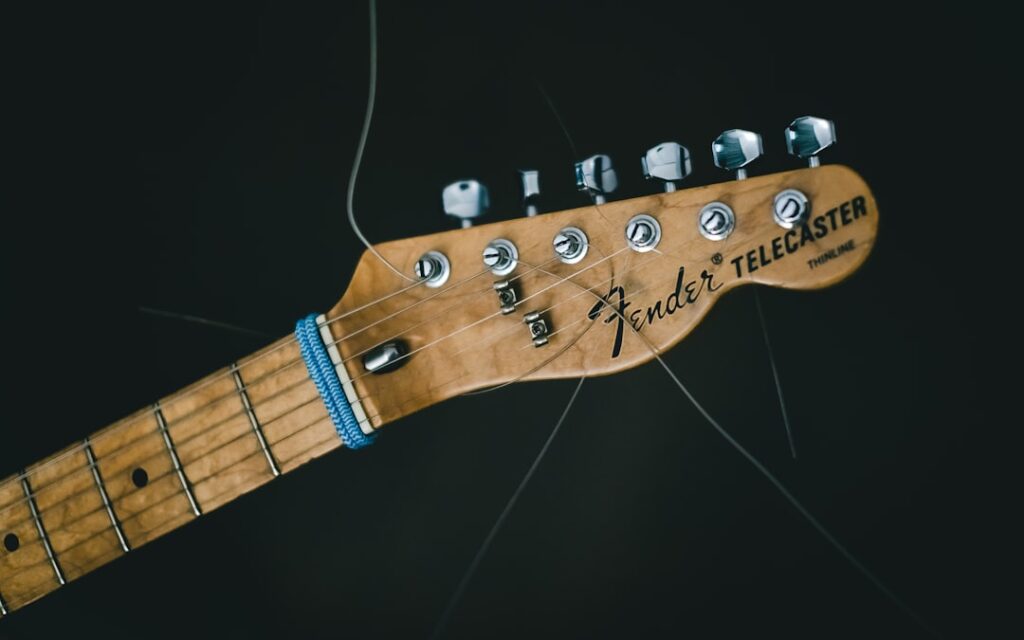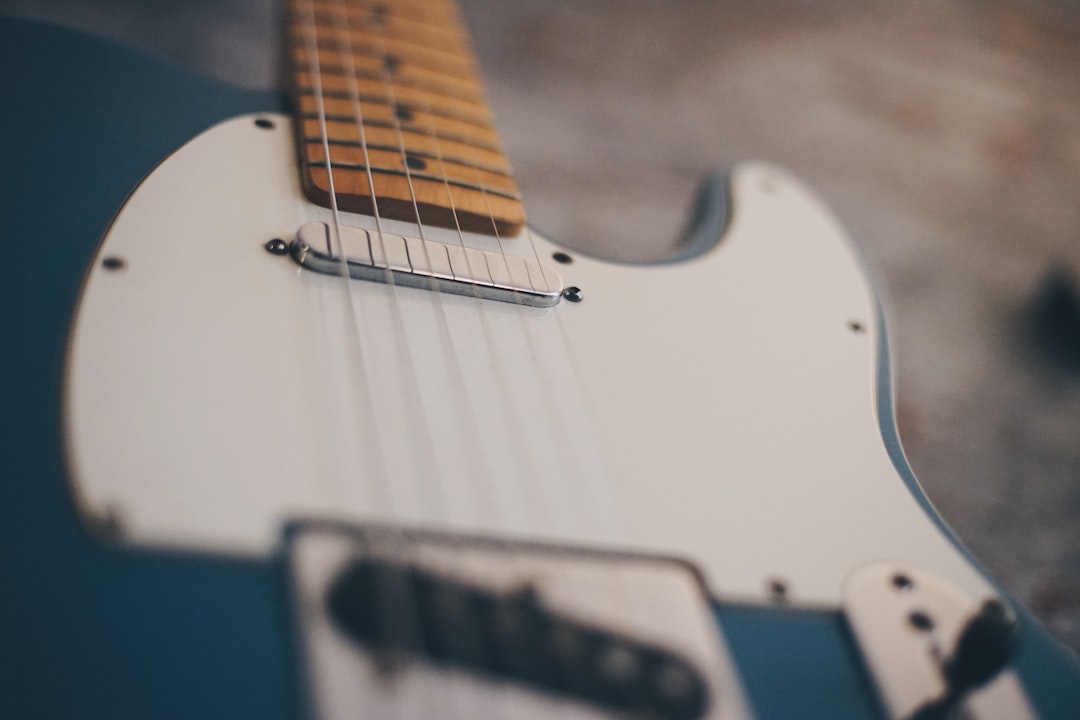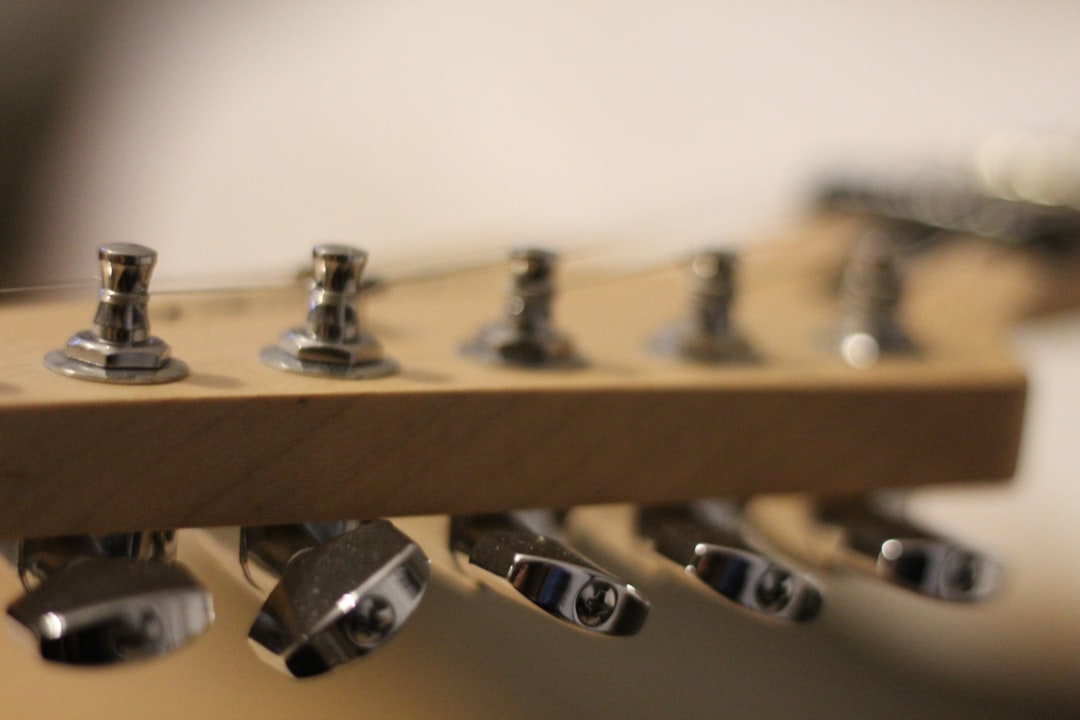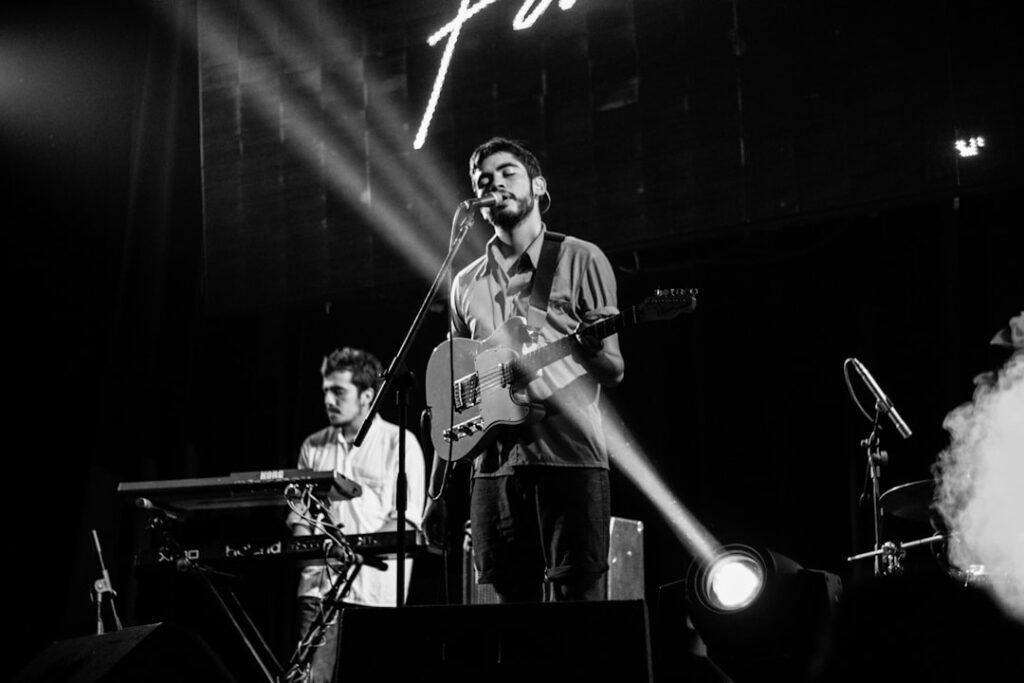- Introduction: PABLO and His Sonic Philosophy
- Amplifiers Behind the Tone: PABLO’s Core Sound
- PABLO’s Guitars: Crafting Character Through Choice
- Effects & Pedalboard: Shaping Color and Chaos
- EQ & Tone Crafting: Less Pedal, More Intention
- Affordable Gear to Capture the PABLO Vibe
- Final Thoughts: The Duality of PABLO’s Sound
Introduction: PABLO and His Sonic Philosophy
PABLO’s guitar work—whether in LiSA’s explosive anthem “Gurenge” or his past with Pay money To my Pain—is defined by a rare mix of raw intensity and refined nuance. His tone isn’t just “loud” or “heavy” for the sake of it. Instead, it’s deeply expressive, with a unique blend of emotional depth and musical precision that transcends genres.
On tracks like “Gurenge,” you’ll hear crushing low-end riffs in Drop C, layered feedback textures, and emotionally charged chord work. Each guitar part seems to “speak” directly to LiSA’s vocal phrasing, acting more like a second voice than just an accompaniment. It’s not just about the notes—it’s about storytelling through sound.
What sets PABLO apart is his emphasis on intuition over calculation. He often describes his creative process as drawing from “sensitivity rather than logic,” with a clear artistic intent behind every tonal decision. From amp selection to effect tweaks, every element of his rig serves the greater narrative of the song.
By diving into PABLO’s tone, you’re not just mimicking a sound—you’re exploring the deeper question of what guitar can express when it becomes an emotional language. This article takes “Gurenge” as a starting point to explore the amps, guitars, and tone philosophy that shape PABLO’s distinctive sonic identity.
▶ Search LiSA’s Official Videos on YouTube
Amplifiers Behind the Tone: PABLO’s Core Sound

When it comes to PABLO’s guitar tone, amplifiers are everything. Especially in songs like “Gurenge,” he builds his sound directly from the amp—no distortion pedals in between. The result is a tone with exceptional depth, clarity, and dynamic response that’s baked into the core of the track.
The heart of his rig is the Marshall JVM410H (Commune Modified). This heavily customized version by Japanese mod brand Commune enhances the already versatile JVM with a unique “Super Resonance” circuit. It delivers crystal-clear low-end, even in Drop C tuning, and maintains tight response under heavy gain. PABLO has used this amp extensively for both recording and live performance since around 2013. When cranked, it provides rich sustain and spatial depth—ideal for the held-out chords in “Gurenge’s” chorus.
For classic British tones, he also turns to the HIWATT Custom Hiwatt 50. Known for its aggressive clean-to-crunch character, this amp adds a punchy, no-frills attitude that suits more direct passages. In addition, the MATCHLESS DC-30 makes an appearance when more nuanced, dynamically responsive crunch tones are needed—especially where subtle picking articulation matters.
Across all these amps, one philosophy is consistent: PABLO’s tone comes from fingers-to-amp, not from a wall of pedals. It’s a commitment he’s carried from his Pay money To my Pain days—building expressive tones from the source.
| Gear | Brand | Amazon Link | Artist | Guitarist | Notes |
|---|---|---|---|---|---|
| JVM410H (Commune Modified) | Marshall | Search on Amazon | LiSA | PABLO | Main amp for “Gurenge,” both in studio and live. Modded for enhanced low-end response and tight gain articulation. |
| Custom Hiwatt 50 | HIWATT | Search on Amazon | LiSA | PABLO | Delivers gritty British-style cleans and crunch. Adds punch to rhythm sections with its raw tone. |
| DC-30 | MATCHLESS | Search on Amazon | LiSA | PABLO | Used for highly expressive crunch tones. Reacts well to touch dynamics and subtle phrasing. |
PABLO’s Guitars: Crafting Character Through Choice

PABLO’s guitar arsenal is every bit as expressive as his playing. Rather than sticking to one signature sound, he chooses each guitar based on the emotional context of the music—especially important when transitioning between his roots in heavy alternative rock and LiSA’s vivid pop-rock textures.
His main workhorse for “Gurenge” is the dragonfly MAROON666, a fully custom model built to handle the demands of Drop C tuning. Featuring a long 666mm scale and set-neck construction, this guitar delivers tight low-end, thick midrange, and massive sustain. It’s equipped with Gibson ’57 Classic humbuckers, which lend a smooth, vintage-inspired breakup perfect for those wide, ringing chords in the chorus.
For songs in standard tuning, PABLO reaches for his dragonfly PREMERO TOM, a signature model with an innovative pickup configuration—one humbucker and one single coil—along with independent volume controls. This setup gives him the flexibility to go from tight funk-like rhythms to soaring melodic leads, all with one guitar.
He also incorporates PRS Mark Tremonti Signature and Custom 24 models into his rotation. The Tremonti is outfitted with Gibson humbuckers for punchy midrange-heavy tones, while the Custom 24’s extended 24-fret range is perfect for LiSA’s songs that require wide melodic spans and technical precision.
When a more organic, dry tone is called for—as in clean arpeggios or second-verse intros—he often uses a Fender Telecaster. Its signature brightness blends seamlessly with vocals, adding rhythm without overpowering the mix. PABLO is also known to bring out a Jazzmaster or Stratocaster when a specific tonal color or dynamic feel is required, making him a master of choosing the right voice for every section.
In essence, his guitar choices are not about brand loyalty or technical specs. They’re about storytelling. Each model he selects serves a role in the musical narrative, adding dimension to LiSA’s sound and allowing PABLO to articulate emotion with remarkable precision.
| Guitar | Brand | Amazon Link | Artist | Guitarist | Type | Notes |
|---|---|---|---|---|---|---|
| MAROON666 | dragonfly | Search on Amazon | LiSA | PABLO | Solid (Humbucker) | Custom-built. Drop C capable. Equipped with Gibson ’57 Classics. Main guitar for “Gurenge.” |
| PREMERO TOM | dragonfly | Search on Amazon | LiSA | PABLO | Hybrid (Humbucker + Single) | Signature model with dual pickup personality. Designed for tonal versatility. |
| Mark Tremonti Signature | PRS | Search on Amazon | LiSA | PABLO | Solid (Humbucker) | Outfitted with Gibson pickups. Delivers thick, mid-forward lead tones. |
| Custom 24 | PRS | Search on Amazon | LiSA | PABLO | Solid (Humbucker) | 24 frets offer extended range. Great balance between playability and tonal depth. |
| Telecaster | Fender | Search on Amazon | LiSA | PABLO | Solid (Single) | Used for clean arpeggios and dry, J-ROCK-inspired textures. |
| Jazzmaster | Fender | Search on Amazon | LiSA | PABLO | Solid (Single) | Bright and wide tone. Ideal for layered clean chords and expressive rhythm work. |
| Stratocaster | Fender | Search on Amazon | LiSA | PABLO | Solid (Single) | Highly versatile. Used for a wide variety of tones depending on the track’s needs. |
Effects & Pedalboard: Shaping Color and Chaos
PABLO’s pedalboard is far from minimal. While his core tone often comes directly from his amp, he’s unafraid to introduce wild, unconventional effects when the arrangement calls for it. His board functions like a painter’s palette—blending textures, creating dimension, and adding unexpected colors to his sonic canvas, especially within LiSA’s pop-rock-meets-heavy music universe.
For high-gain tones, his go-to includes the gritty and aggressive ProCo Turbo RAT (1989) and the infamous Univox Super-Fuzz. These are the kind of distortion/fuzz pedals that defined ’90s grunge and industrial rock—brutal, raw, and unapologetically lo-fi. They’re ideal for deep riffs loaded with subharmonics and hair-raising grit.
On the more refined side, he uses a CULT-modded TS808 and the FUJIYAMA DRIVE to add warmth and midrange character without stepping all over the amp’s natural tone. These responsive overdrives help fine-tune the amp’s gain structure, especially in mid-gain or boost scenarios.
Then there’s the experimental side of his board: Z.VEX Fuzz Factory, Distortron, and the sonic destroyer WMD Geiger Counter bring glitchy, noisy chaos when needed. These units introduce textures that are otherworldly—bitcrushed tones, oscillating fuzz, or bizarre feedback loops that often jump out in LiSA’s more daring sections.
Spatial effects are used sparingly, but effectively. The MXR Carbon Copy analog delay is a staple—warm, cohesive, and musical. He owns multiple units for different setups. For modulation, a weed-modded Electro-Harmonix Small Clone offers a lush yet subtle chorus, perfect for arpeggios and ambient backing. The quirky Z.VEX Sonar adds rhythmic tremolo pulses—great for breakdowns or C sections where movement is key.
He rounds out his board with expressive filter effects like the Jim Dunlop Cry Baby DB01 (Dimebag signature) for dramatic wah sweeps, and the WMD Super Fatman envelope filter, which injects motion and vibe into clean parts and solos alike.
Ultimately, PABLO’s approach to pedals isn’t about stacking effects—it’s about intention. Every stompbox has a place, a role, and a reason. His pedalboard becomes a toolset not for excess, but for maximum expression within LiSA’s emotionally charged musical storytelling.
| Effect | Brand | Amazon Link | Artist | Guitarist | Type | Notes |
|---|---|---|---|---|---|---|
| Turbo RAT | ProCo | Search on Amazon | LiSA | PABLO | Distortion | Vintage 1989 unit. Brutal, thick tone for heavy riffing. |
| Super-Fuzz | Univox | Search on Amazon | LiSA | PABLO | Fuzz | Ideal for grungy chaos and rich harmonic overtones. |
| The RAT | ProCo | Search on Amazon | LiSA | PABLO | Distortion | 1991 reissue. Offers chewy midrange for solos and rhythm. |
| FUJIYAMA DRIVE | Honda Sound Works | Search on Amazon | LiSA | PABLO | Overdrive | British-style warmth and tight response. Perfect for amp-like tone shaping. |
| Geiger Counter | WMD | Search on Amazon | LiSA | PABLO | Noise/Bitcrusher | Destroys and redefines tone with glitchy, bitcrushed madness. |
| Cry Baby DB01 | Jim Dunlop | Search on Amazon | LiSA | PABLO | Wah | Dimebag Darrell model. Delivers bold, in-your-face sweep for expressive parts. |
| Carbon Copy | MXR | Search on Amazon | LiSA | PABLO | Delay | Classic analog delay. Warm and musical, used in multiple setups. |
| Small Clone (weed mod) | Electro-Harmonix | Search on Amazon | LiSA | PABLO | Chorus | Subtle modulation for clean parts and background texture. |
| Sonar | Z.VEX | Search on Amazon | LiSA | PABLO | Tremolo | Rhythmic pulse for dynamic transitions and breakdowns. |
| Super Fatman | WMD | Search on Amazon | LiSA | PABLO | Envelope Filter | Adds synth-like motion to solos or clean rhythms. |
EQ & Tone Crafting: Less Pedal, More Intention

At the core of PABLO’s tone philosophy is a minimalist yet powerful approach: plug straight into the amp and shape everything from there. For emotionally dynamic tracks like “Gurenge,” he doesn’t rely on drive pedals for distortion. Instead, he pushes the amp—particularly the modified JVM410H—to the edge and sculpts the response using touch, EQ, and channel voicing.
Interestingly, PABLO often runs his amp at full-tilt (all knobs at 10), a choice that maximizes saturation, harmonics, and sustain. But that doesn’t mean it’s all chaos. For verses and intros (A/B sections), he rolls off the gain slightly and emphasizes low-mids, creating a tight and focused sonic bed that balances under the vocal. In contrast, during the choruses, he lets the amp roar—producing a wide, blooming sustain perfect for ringing “shiratama” chords that carry emotional weight and harmonic overtones.
His EQ strategy is deliberate: he carves out space for LiSA’s vocals by dipping around 2–4 kHz—a critical range for vocal presence—and reinforces the low-mid body between 400–800 Hz. This approach lets his guitar sit confidently in the mix without masking the vocals, building a sonic “foundation” rather than fighting for spotlight.
When using harmonics or feedback effects—like in the pre-chorus slap or whammy builds—he avoids over-processing with EQ or compression. Instead, he lets natural overtones breathe, sometimes applying only light compression to extend sustain. Notably, some feedback parts are designed to harmonize in unison with LiSA’s vocal lines, which shows the depth of arrangement behind the chaos.
PABLO also keeps his stereo imaging relatively centered. Instead of relying heavily on delays or reverb, he’ll switch to a different guitar—like a Telecaster or Stratocaster—for contrast, and pan it gently left or right during transition moments (e.g., second verses or C sections). This technique provides width without washing out the clarity of the mix.
What defines PABLO’s tone is contrast and emotional contour. He builds tension through dry, dark textures, then releases it with rich, expansive chords. It’s never about sounding “big” for its own sake—but about sculpting a dynamic space where the guitar carries feeling, not just sound.
Affordable Gear to Capture the PABLO Vibe
While PABLO’s tone is forged from high-end amps, custom guitars, and modded pedals, you don’t need a massive budget to chase his sonic spirit. With the right mindset and a few clever gear choices, you can get surprisingly close to his feel, responsiveness, and tonal palette—even on a budget.
First and foremost: if you’re after the amp-driven distortion and dynamic control found in “Gurenge,” the BOSS Katana-50 MkII is a fantastic starting point. This solid-state amp delivers convincing tube-like response and supports deep tone shaping via its internal EQ and effect sections. With multiple gain stages and flexible voicings, it can easily emulate the characteristics of PABLO’s modded Marshall JVM410H. Best of all, it’s equally suitable for home use, rehearsals, and small gigs.
Looking for a distortion pedal alternative? The JHS Angry Charlie V3 is one of the best Marshall-style pedals around, offering thick, mid-focused gain that responds beautifully to picking nuances. It captures the essence of PABLO’s dense rhythm tone and is highly tweakable. For a more budget-friendly but still powerful option, the MXR Super Badass Distortion is a versatile all-rounder that can mimic JVM-like high-gain tones while allowing fine EQ control.
For spatial effects, the NUX Atlantic is a compact unit that combines delay and reverb in one pedal—perfect for players aiming to replicate PABLO’s minimalist approach to ambience. Use it subtly to add depth without washing out the mix.
If you’re looking to capture some of PABLO’s clean tones and twangy dynamics—especially from his Telecasters or Strats—the Squier Classic Vibe Series offers excellent quality at a reasonable price. These guitars are known for their expressive cleans, snappy attack, and responsiveness, making them great for rhythm parts and expressive phrasing.
Finally, if you want to push your leads and clean parts forward with more presence and sustain, the TC Electronic Spark Booster is a simple but powerful tool. It’s ideal for making “shiratama” chords sing and adds a sweet harmonic richness that helps your tone cut through without harshness.
| Type | Gear | Brand | Amazon Link | Artist | Guitarist | Notes |
|---|---|---|---|---|---|---|
| Amp | Katana-50 MkII | BOSS | Search on Amazon | LiSA | PABLO | Tight, amp-like feel with onboard EQ and effects. A great JVM-style tone platform for beginners. |
| Distortion | Angry Charlie V3 | JHS | Search on Amazon | LiSA | PABLO | Excellent Marshall-in-a-box tone. Ideal for riff-heavy, midrange-rich distortion. |
| Distortion | Super Badass Distortion | MXR | Search on Amazon | LiSA | PABLO | Highly adjustable EQ. Covers a wide gain range from vintage crunch to modern roar. |
| Delay/Reverb | Atlantic | NUX | Search on Amazon | LiSA | PABLO | Combines delay and reverb. Great for subtle ambience in minimalist mixes. |
| Guitar | Classic Vibe Series | Squier | Search on Amazon | LiSA | PABLO | Vintage-style Tele/Strat tone at a great price. Excellent for expressive cleans and arpeggios. |
| Booster | Spark Booster | TC Electronic | Search on Amazon | LiSA | PABLO | Clean boost with harmonic presence. Helps sustain and clarity in ringing chords. |
All of these pieces come in under the mid-range budget (roughly ¥10,000–¥50,000 / $70–$350), and together they can get you close to the vibe and feel of PABLO’s expressive tones. More importantly, they’ll help you develop your own voice while learning from his approach to gear and sound design.
Final Thoughts: The Duality of PABLO’s Sound

PABLO’s guitar tone is not just a collection of gear settings—it’s a reflection of emotion, intention, and duality. It bridges the weight of modern loud rock with the elegance of J-pop, creating a signature sound that’s both aggressive and graceful. Whether backing LiSA’s iconic vocals or carving out riffs in his earlier band, his playing is never just about being “heavy”—it’s about telling a story.
What’s striking is how PABLO achieves all this without relying on overly complex rigs or flashy gear chains. His approach is rooted in clarity of purpose: build the core sound with the amp, choose the guitar for the moment, add only what’s essential. His tones are crafted not to showcase himself, but to serve the emotion of each song. He is, at heart, a guitarist who plays for the composition—not the ego.
His inspirations range widely—from Metallica’s metal muscle to Nickelback’s melodic weight to the gentle sincerity of Japanese artist Kazumasa Oda. Yet he never imitates. Instead, he assimilates these influences and reconstructs them into something entirely his own—something unmistakably “PABLO.” That’s what gives his sound such uniqueness within the Japanese rock landscape.
By studying his choices and trying the tools featured in this guide, you’re not just chasing PABLO’s tone—you’re stepping into a mindset where every part of your signal chain has meaning. Even if your gear isn’t identical, you can still shape tones that resonate with power and purpose—just like he does.
Whether you’re building your first board or refining your tone philosophy, let PABLO’s artistic discipline remind you: sound is more than settings. It’s how you feel through your fingers and let that feeling live through your gear.







コメント